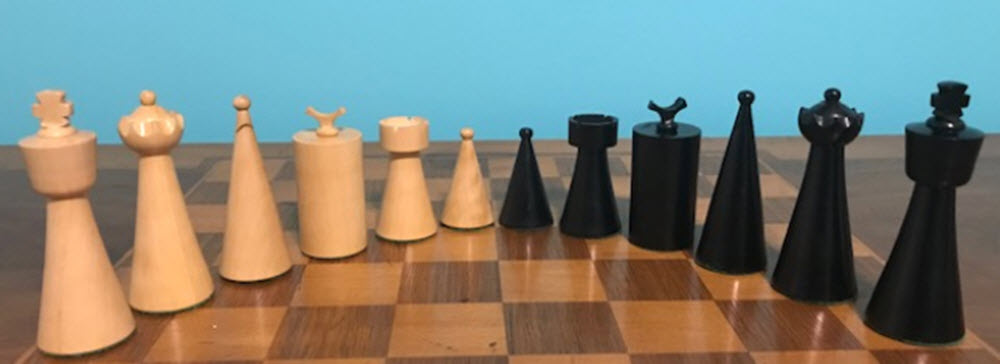A Tamerlane chess set is used to play Tamerlane chess, a medieval chess variant. Just like modern chess, Tamerlane chess has its roots in the game shantranj.

Tamerlane chess developed in Central Asia during the reign of Emperor Timur, and he is often credited as the inventor.
One notable characteristics of Tamerlane chess is the large board and the variety of pawns.
The Tamerlane board
- The Tamerlane board centre consists of 110 (unchequered) squares arranged in a 10×11 pattern. This part is called ”camp”.
- One additional square protrude from the left side on the 9th row, and another one from the right side on the 2nd row. These two squares are known as ”citadels”.
- The total number of squares are 112 (110 camp + 2 citadels).
Modern versions of the Tamerlane board sometimes have chequered squares, making it look more similar to a modern chess board.
Only a king is allowed to move into a citadel. If a player´s citadel becomes occupied by the opposing king, the game is declared a draw.
Tamerlane chess pieces
- Shah (king). Moves like a modern-chess king, but ONCE during the game the Tamerlane king may switch places with any of its own pieces to evade a check/checkmate/stalemate.
- Ferz (general / counsellor). Moves one square diagonally.
- Wazir (governor). Moves one square horizontally or vertically.
- Zurafa (giraffe). Moves one square diagonally and then a minimum of three squares horizontally or vertically (a restricted gryphon).
- Tali´a (picket). Moves diagonally like a modern-chess Bishop, but must move at least two squares.
- Faras (knight). Moves like a modern-chess knight.
- Rukh (rook). Moves like a modern-chess rook.
- Pil (elephant). Moves two squares diagonally and is not blocked by pieces in between.
- Jamallshutur (camel). Moves one square diagonally and two squares straight. Just like the elephant, the camel is not blocked by pieces in between.
- Dabbaba (war engine). Moves two squares horizontally or vertically, and is not blocked by pieces in between.
- Pawns. Move like modern-chess pawns, but without the initial two-square move. En passant capture is not permitted.
In Tamerlane chess, each piece has a corresponding pawn. There is the pawn of Shah, pawn of Ferz, pawn of Wazir, and so on.
Opening setup
There are several accepted opening setups for Tamerlane chess, so it is important to agree with your partner beforehand about which setup to use.
This is one of the most common ones:
- White´s side bottom row, from the left: elephant, (space), camel, (space), war machine, (space), war machine, (space), camel, (space), elephant
- White´s side second row, from the left: rook, knight, picket, giraffe, general, king, vizier, giraffe, picket, knight, rook
- White´s side third row, from the left: pawn of pawns, pawn of war engines, pawn of camels, pawn of elephants, pawn of general, pawn of king, pawn of vizier, pawn of giraffes, pawn of pickets, pawn of knights, pawn of rooks
Black´s side mirrors White´s side.
